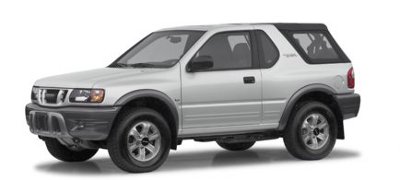Rodeo Exhaust Videos
- 1988 Isuzu Rodeo Exhaust Systems
- 1989 Isuzu Rodeo Exhaust Systems
- 1990 Isuzu Rodeo Exhaust Systems
- 1991 Isuzu Rodeo Exhaust Systems
- 1992 Isuzu Rodeo Exhaust Systems
- 1993 Isuzu Rodeo Exhaust Systems
- 1994 Isuzu Rodeo Exhaust Systems
- 1995 Isuzu Rodeo Exhaust Systems
- 1996 Isuzu Rodeo Exhaust Systems
- 1997 Isuzu Rodeo Exhaust Systems
- 1998 Isuzu Rodeo Exhaust Systems
- 1999 Isuzu Rodeo Exhaust Systems
- 2000 Isuzu Rodeo Exhaust Systems
- 2001 Isuzu Rodeo Exhaust Systems
- 2002 Isuzu Rodeo Exhaust Systems
Rodeo Exhaust System Tips

Isuzu Motors pulled out of the U.S. market in early 2009, following years of declining sales and an unfortunate product draining relationship with General Motors. While hitched to GM, the Japanese automaker abandoned its own product aspirations and began selling rebadged Chevrolet trucks. Alas, demand collapsed and Isuzu retreated from a market where it once showed some promise.
The Isuzu Rodeo was one of the best sport utility vehicles available when it arrived on the market for the 1991 model year. At that time, the SUV market was just starting to heat up, with Ford, Jeep and Chevrolet dominating the segment, and with most foreign makes still several years away from fielding SUVs of its own. Indeed, Isuzu supplied this truck to Honda who sold its Passport from 1994 to 2002 before coming up with the Honda Pilot, a unibody SUV.
Produced for two generations, the first generation Isuzu Rodeo was sold from 1991 to 1997; the second generation model was sold from 1998 to 2004. Two- and four-door models were produced except during the final model year when the two-door was discontinued.
First Generation
Available in two- and four-wheel drive, the first generation Isuzu Rodeo was built in Indiana and sourced one of its engines from GM. That 3.1-liter V-6 was paired with a 5-speed manual or optional 4-speed automatic transmission and rated at 120 horsepower at 4,400 rpm and 165 lb.-ft. of torque at 2,800 rpm. Standard with the 2WD Rodeo was a 2.6-liter four cylinder paired with a 5-speed manual transmission and rated at 119 horsepower.
Two years after its introduction, Isuzu replaced the GM V-6 with a 24-valve 3.2-liter V-6 of its own design, rated at 175 horsepower at 5,200 rpm and 188 foot-pounds of torque at 4,000 rpm. Clearly, this engine represented a marked improvement for Isuzu owners who enjoyed its 4,500 pound towing capacity and off-road prowess.
Second Generation
In 1998, the second and final generation Isuzu Rodeo made its debut, powered by a GM-supplied 2.2-liter Vortec engine. Rated at 130 horsepower, this engine was routinely avoided by buyers who knew that it wasn’t sufficient to pull this two ton SUV. The 3.2-liter V-6 was back, the engine of choice for serious SUV fans and off-road enthusiasts.
For 2004, Isuzu finally ditched the GM four and added a second V-6 engine to the line up. That 3.5-liter V-6 featured gasoline direct injection and is rated at 250 horsepower and 246 lb.-ft of torque, offering top of the range performance on and off road.
If you own an Isuzu Rodeo, particularly a late model version and especially one outfitted with the larger V-6, you have a workhorse on your hands. All Rodeos are still actively supported by aftermarket manufacturers who are keeping Isuzu owners supplied with exterior enhancements such as grille guards, side steps and hitch accessories. Driving lights, fog lights and reflectors along with an assortment of performance enhancing parts are expanding and extending the driving experience for Isuzu Rodeo faithful.
There are a few companies producing exhaust systems for the Isuzu Rodeo:









I have a 2002 Isuzu rodeo sport 4 wheel drive looking hardtop